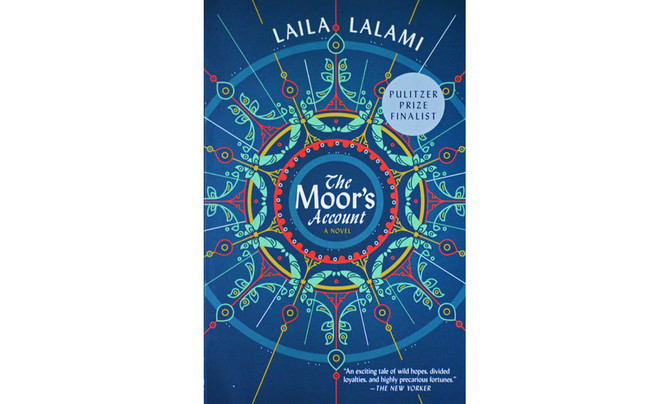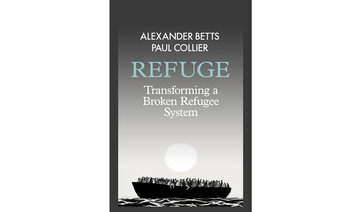“The Moor’s Account” by Laila Lalami is a fictionalized memoir of a Moorish slave from Morocco named Mustafa ibn Muhammad ibn Abdussalam Al-Zamori. Known as Estebanico by his Spanish master and conquistador, Andrés Dorantes, he travels with a Spanish fleet in 1527 to settle in La Florida for the king and queen.
Of the five ships and 600-strong contingent that land on the shores of the New World, only four manage to survive and one of them is Mustafa. Lalami’s book is based on real accounts of the expedition through Mustafa’s eyes and it reads as hauntingly as it does correctly in terms of details and times we know so little of. This is Lalami’s third book and was a Pulitzer Prize finalist in 2015.
The story begins with Mustafa arriving in La Florida as part of Governor Pánfilo de Narváez’s expedition. At 30 years of age, and five years as a slave, Mustafa floats between two planes: On the first he clings to his past, longing for Morocco, his old life and the old world, and second, his present state and status. Mustafa dreams of being back at home in Morocco where he was free and known by his real name. After he is enslaved and sold to Dorantes, he is given a new name and identity, stripping him of his history.
“A name is precious; it carries inside it a language, a history, a set of traditions, a particular way of looking at the world.” It matters little to those who enslave him that “Estebanico was a man conceived by the Castilians, quite different from the man I really was.”
But he finds himself in the West, a slave, where freedom is a very remote possibility. He is witness to the discovery of the New World and sees his future there, no matter how much he wishes to be back home. “The ambition of the others trained you, slowly and irrevocably.”
Mustafa’s memoir accounts all that transpires after landing in the New World. He serves to partially authenticate the accounts of his companions, Andrés Dorantes de Carranza, Alonso del Castillo Maldonado and Álvar Núñez Cabeza de Vaca.
“The first was my legal master; the second my fellow captive, and the third my rival storyteller.” Beholden to rules and laws, the three men leave much out of their accounts when they tell their stories later. Mustafa leaves nothing out of his story because he is “neither beholden to Castilian men of power, nor bound by the rules of society to which I did not belong;” he was “free to recount the true story of what happened to my companions and me.”
The moment the expedition begins, the Spanish discover gold in an abandoned Indian village. With a thirst for wealth and after capturing a few Indians, Narváez decides to march farther inland in search of more treasure. He renames the Indian village Portillo and allows the notary Jerónimo de Albaniz to declare the land which is now the property of Spain’s king and queen. The scene reminds Mustafa of when the Portuguese took over his hometown in Morocco, changing his destiny and separating him from his family. “Now, halfway across the world, the scene was repeating itself on a different stage, with different people.”
It is then that the expedition splits; 600 people were felt to be too large a group to march together. Narváez sends 300 people — women, children and those unable to march — to the ships, which will eventually meet them at Pánuco; he and all the able-bodied men march to Apalache. With riches hoped to match those of Montezuma, the expedition begins with overzealous attitudes but soon becomes a journey that not only tests the physical vigor of men but their mental stability and luck. They meet some tribes that are kind and helpful and others that are hostile, but because of limited resources, dangerous animals, mosquitoes and fever, only four survive, and the definition of survival in the New World is different from the one they are used to.
Lalami’s book is moving from the first page. The parallels between being enslaved in one land and traveling thousands of miles to conquer another are disturbingly similar with the viciousness of the captor and the hostile environment. The conditions in which Mustafa travels and all that he endures, as well as details of the Spanish conquerors and the native population, are all meticulously told. Lalami’s words are carefully crafted to depict a complicated and heartbreaking history of conquerors and conquests.
The book tells all as seen by Mustafa who sees everything from interaction among the Spanish to meeting the indigenous population, to himself, a black slave among white masters, in the land of the “red-skin” Indian. The book moves between Mustafa’s present and past, as a slave and as a free man in his home town of Azemmur, the son of a notary and a clever merchant. Lalami writes of Mustafa’s life in Morocco with an ease and a gentleness like the breezes there. She writes of calls to prayer, roasting lambs and bustling souqs, which contrast starkly with the untamed wilderness of the New World, the tattooed people, the swarming mosquitos and the desperate will to survive.
Mustafa adapts to his surroundings, moving through the land and his own predicament. In the New World, he soon realizes that there is neither master nor slave when survival is at stake. Here, he can be the equal of Dorantes and the captains; he even becomes a healer and a storyteller, acting in the same way as he once saw in the crowded souq in Azemmur when he was a boy.
Lalami’s research into this book was extensive as she shaped her characters around real events that occurred 490 years ago. It is also an enormous accomplishment when we realize she bases her protagonist on one line she read in Cabeza de Vaca’s diary, “The fourth (survivor) is Estebanico, an Arab Negro from Azamor.” Nothing is known of Estebanico, and no other account mentions him. We long in vain to know more about him but hundreds of years later, it is Lalami who finally puts into words what life may have been for him as she beautifully brings him into being.
“After all, what the sufferers needed most of all was an assurance that someone understood their pain and that, if not a full cure, at least some respite from it lay further ahead. This too was something I had learned in the markets of Azemmur: a good story can heal.”
— Manal Shakir is the author of “Magic Within,” published by Harper Collins India, and a freelance writer. She lives in Chicago, Illinois.
• [email protected]
Book Review: ‘The Moor’s Account’ gives a Moroccan slave his voice
Book Review: ‘The Moor’s Account’ gives a Moroccan slave his voice

What We Are Reading Today: ‘Breaking the Mold’

Authors: RAGHURAM G. RAJAN AND ROHIT LAMBA
India’s economy has overtaken the United Kingdom’s to become the fifth-largest in the world, but it is still only one-fifth the size of China’s, and India’s economic growth is too slow to provide jobs for millions of its ambitious youth.
In “Breaking the Mold,” Raghuram Rajan and Rohit Lamba show why and how India needs to blaze a new path if it’s to succeed.
What We Are Reading Today: ‘The Things You Can See Only When You Slow Down’

Author: Haemin Sunim
“The Things You Can See Only When You Slow Down: How to be Calm in a Busy World” offers advice on how to find inner peace in today’s busy world.
The 300-page book, published in 2017, was written by Haemin Sunim, a Korean Buddhist monk, and has sold more than 3 million copies.
The author underwent monastic training in South Korea before spending seven years teaching Asian religions at Hampshire College in the US. The book elaborates on the wisdom he gained from personal experiences as a Buddhist monk.
One of the book’s strengths is its simplicity. The author’s writing style is easy to understand as he presents his ideas in bite-sized chapters, each focusing on a different aspect of mindfulness.
Whether he is writing about the meaning of silence or of gratitude, Sunim’s words resonate with a quiet authority which prompts the reader to pause and reflect on their own lives.
In addition, the book is filled with amazing imagery that complements the stories. The beautiful drawings contribute to Sunim’s narrative and create a sense of serenity and peace.
The author emphasizes the concept of enjoying the little things in life to the fullest, such as drinking a cup of tea in the morning, taking a walk in nature, or having a thoughtful conversation with loved ones.
Slowing down allows people to notice the happiness hidden in even the simplest tasks and moments, he claims.
He also encourages readers to be kind to themselves and offers advice on how people can develop a deeper sense of self-acceptance and self-love, fostering emotional well-being and resilience.
Sunim’s wisdom and compassion are clear. His words remind readers that despite the noise and distractions of the modern world, true happiness can be found when they slow down.
What We Are Reading Today: Out of One, Many

Author: Jennifer T. Roberts
Covering the whole of the ancient Greek experience from its beginnings late in the third millennium BCE to the Roman conquest in 30 BCE, “Out of One, Many” is an accessible and lively introduction to the Greeks and their ways of living and thinking. In this fresh and witty exploration of the thought, culture, society, and history of the Greeks, Jennifer Roberts traces not only the common values that united them across the seas and the centuries, but also the enormous diversity in their ideas and beliefs.
Examining the huge importance to the Greeks of religion, mythology, the Homeric epics, tragic and comic drama, philosophy, and the city-state, the book offers shifting perspectives on an extraordinary and astonishingly creative people.
Century after century, in one medium after another, the Greeks addressed big questions, many of which are still very much with us, from whether gods exist and what happens after we die to what political system is best and how we can know what is real. Yet for all their virtues, Greek men set themselves apart from women and foreigners and profited from the unpaid labor of enslaved workers, and the book also looks at the mixed legacy of the ancient Greeks today.
The result is a rich, wide-ranging, and compelling history of a fascinating and profoundly influential culture in all its complexity—and the myriad ways, good and bad, it continues to shape us today.
What We Are Reading Today: ‘If Cats Disappeared from the World’

- Beautifully written and emotionally moving, it is also a testament to the power of storytelling and reminds people of the deep impact of making personal choices and connections
Author: Genki Kawamura
“If Cats Disappeared from the World” is a novel written by Japanese author Genki Kawamura. The book was published in 2012 and was rated 4/5 by over 75,000 readers worldwide.
Kawamura is a worldwide bestselling author. “If Cats Disappeared from the World” was his first novel, which sold over 1 million copies in Japan and was translated into over 14 languages.
In this novel, Kawamura tells the story of a postman who is diagnosed with an uncurable illness. However, when he accepts his destiny, the Devil appears to him with an unusual proposal. The postman must choose one thing to eliminate from this world for him to live one more day. During his journey, the postman then starts examining the true value of everything he owns.
Kawamura’s writing style is simple yet evocative, inviting readers to dive deep into the layers of their own emotional journey with every page. The narrative provides a delicate balance between moments of happiness and sorrow, using cats as a symbol of companionship and joy.
Moreover, the book allows readers to reflect on the value of relationships and experiences. It raises questions regarding the decisions people make, the legacies they leave behind, and the core meaning of everyday moments, which eventually shape people’s characters and how they think.
The novel encourages people to take a deep breath and reflect on the blessings people have, yet neglect, due to their busy lives.
With Kawamura’s thoughtful message and memorable characters, this novel is a compelling exploration of the human experience, providing comfort and inspiration, and a new appreciation for the beauty and brevity of life.
Beautifully written and emotionally moving, it is also a testament to the power of storytelling and reminds people of the deep impact of making personal choices and connections.
What We Are Reading Today: ‘Chinese Espresso’ by Grazia Ting Deng

Italians regard espresso as a quintessentially Italian cultural product—so much so that Italy has applied to add Italian espresso to UNESCO’s official list of intangible heritages of humanity. In this book, Grazia Ting Deng explores the paradox of “Chinese Espresso”— the fact that this most distinctive Italian social and cultural tradition is being preserved by Chinese immigrants and their racially diverse clientele.




















